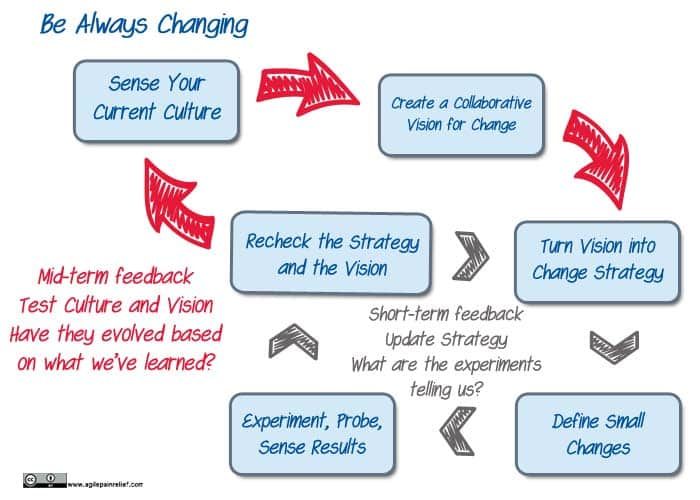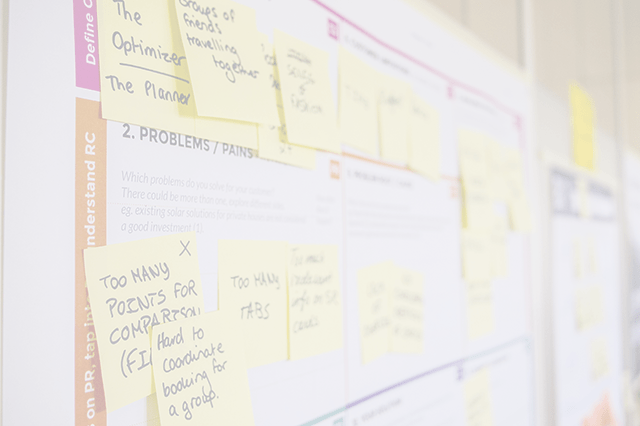Agile Change or Adoption: the Steps to Go from “Why” to “How”

(Continued from Agile Change or Adoption Always Starts with Why)
If you’re going to become an Agile Organization, and you understand that it has to be a collaborative discussion and effort rather than an executive decree, here are the key ingredients to move forward with that decision effectively:
-
Sense Your Current Culture
Be mindful of the current state of both the business and culture before starting, so it can structure the change to fit in organically.
-
Create a Vision for Change
Create a vision for change collaboratively with people from all levels of the organization, not just the executives. Invite collaboration rather than proclamation. Visualize both the change (e.g. Product Box and the work involved in the change (e.g. a Kanban board)
-
Go from Vision to Strategy
See the Leaders changing before the Doers. Work in small steps, in the same vein as Scrum User Stories, making many small changes with each being an incremental improvement on the ones preceding it.
-
Define Small Organizational Changes
Experiment. Probe and adapt, using each change as an examination of the existing system and, when you get information back, update the plan.
-
Recheck the Strategy and the Vision
Be always changing – the pace of change continues to increase in the world, so we need to grow a culture where frequent small changes are the norm. Apply these steps as two concurrent feedback loops, rather than a linear list. One short-term (weeks), and the other mid-term (executed every 4-6 months).
In the next post in this series we’ll explore the above ingredients, and apply case studies for context and real world practical application.
Image attribution: Agile Pain Relief Consulting

Mark Levison
Mark Levison has been helping Scrum teams and organizations with Agile, Scrum and Kanban style approaches since 2001. From certified scrum master training to custom Agile courses, he has helped well over 8,000 individuals, earning him respect and top rated reviews as one of the pioneers within the industry, as well as a raft of certifications from the ScrumAlliance. Mark has been a speaker at various Agile Conferences for more than 20 years, and is a published Scrum author with eBooks as well as articles on InfoQ.com, ScrumAlliance.org and AgileAlliance.org.
